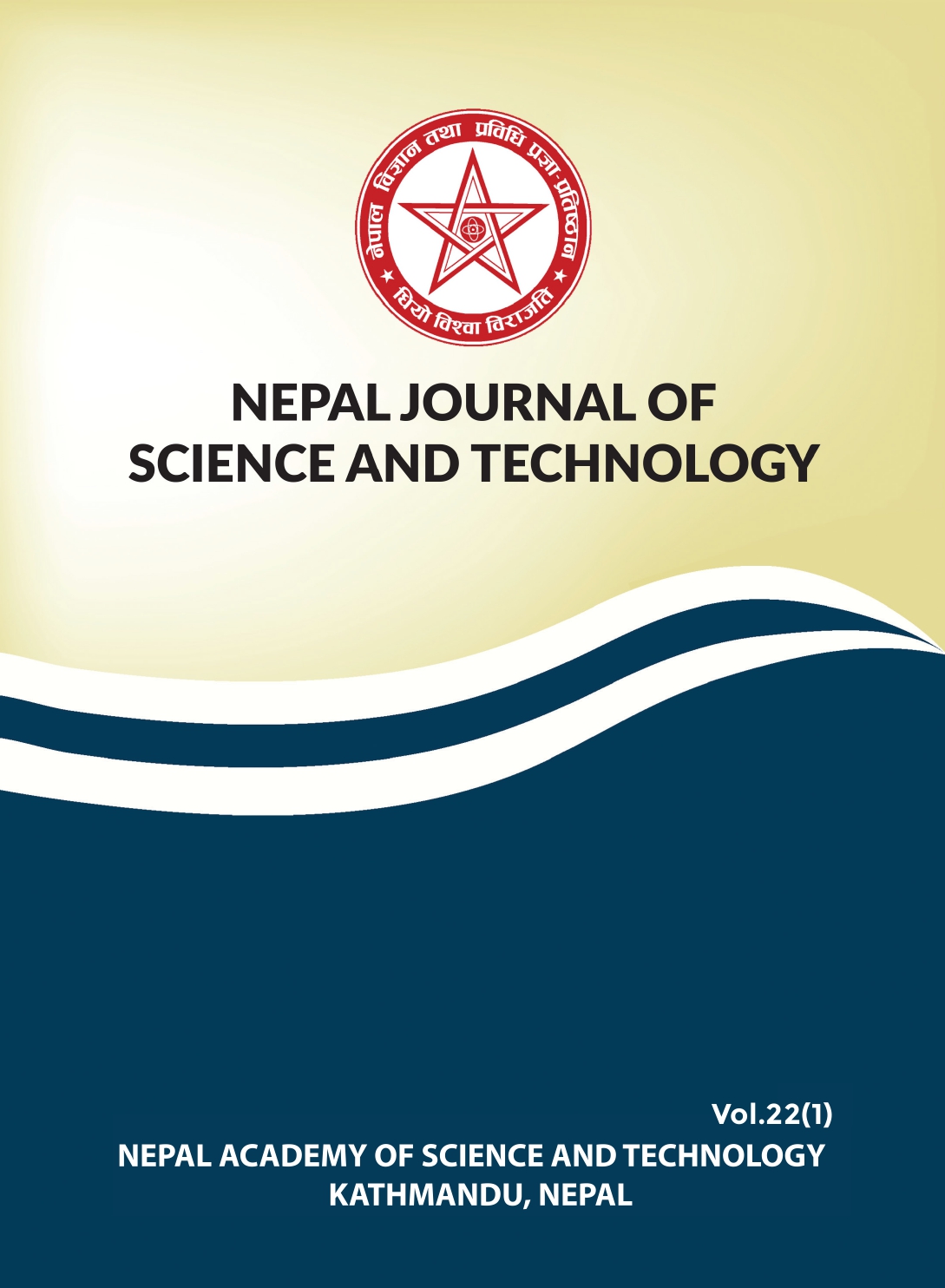Hepatoprotective Potential of Selected Medicinal Plants: Evaluating their Antioxidant and Antibacterial Activities
DOI:
https://doi.org/10.3126/njst.v22i1.67162Keywords:
Hepatoprotective, Antioxidant, Antibacterial activity, Diplazium stoliczka, Bombax ceiba, Cuscuta reflexaAbstract
From the survey, a total of 41 plant species belonging to 30 families were found to be useful in the treatment of hepatic disorders. The mostly used were the whole plant of Cuscuta reflexa (85%) and fruits of Carica papaya (50%), Saccharum officinarum (46.5%) and Cucurbita pepo (44.5%). Herbal remedies were mostly prepared from freshly collected plants and used alone or with water. Among the documented species, six plant parts, that were least studied previously, were selected for the study of antioxidant and antibacterial activities. The extracts of Diplazium stoliczkae, rhizomes and leaves both, with IC50 value, 5.54 and 5.49 µg/ml respectively, close to that of standard, ascorbic acid (4.80 µg/ml) showed potent antioxidant activity against 1,1-diphenyl-2-picryl hydrazyl (DPPH) free radical. Also, the extracts of rhizomes and leaves of D. stoliczkae and bark of Bombax Ceiba showed antibacterial activity comparable to that of standard drugs at a concentration of 1 mg/ml.
Downloads
Downloads
Published
How to Cite
Issue
Section
License
Copyright (c) 2023 The Author(s)

This work is licensed under a Creative Commons Attribution-NonCommercial 4.0 International License.
Authors retain copyright and grant the journal right of first publication.




